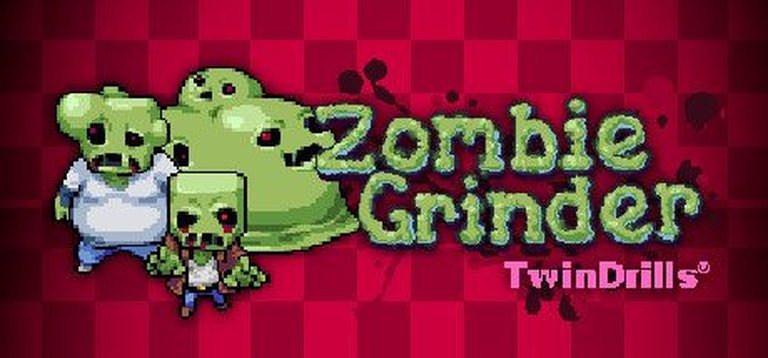- Release Year: 2012
- Platforms: Linux, Macintosh, Windows
- Publisher: TwinDrills
- Developer: TwinDrills
- Genre: Action
- Perspective: Diagonal-down
- Game Mode: Co-op, Online Co-op, Single-player
- Gameplay: Shooter
- Setting: Fantasy
- Average Score: 80/100

Description
Zombie Grinder is a cooperative multiplayer arcade game developed by TwinDrills, blending retro-style gameplay with modern mechanics. Set in a fantasy world, players battle hordes of zombies in various modes like campaign levels, wave-based challenges, and PvP battles, utilizing a wide array of weapons and customizable items, all presented in a quirky pixel-art style.
Where to Buy Zombie Grinder
PC
Zombie Grinder Mods
Zombie Grinder Guides & Walkthroughs
Zombie Grinder Reviews & Reception
indiedb.com (80/100): This game is fantastic, but for a 9-10 there must be more content
moddb.com (80/100): This game is fantastic, but for a 9-10 there must be more content
Zombie Grinder: Review
Introduction
In the pantheon of zombie-themed video games, Zombie Grinder stands out as both an homage to retro arcade classics and a cautionary tale of indie game development. This cross-platform cooperative shooter, developed by the indie duo TwinDrills, promised waves of zombies, deep customization, and endless multiplayer fun. However, after an uncertain journey through early access and a protracted silence from its creators, it remains a cult classic marred by incomplete features and unresolved potential.
Development History & Context
Zombie Grinder was the debut project of Tim ‘Infini’ Leonard and Jordan ‘Jordizzle’ Chewning, collectively known as TwinDrills. The duo initially released the game for free on Desura in 2012, a now-defunct platform for indie games. Its popularity there led to a successful Steam Greenlight campaign, culminating in a 2015 Steam release under Early Access. The move to Steam, however, exposed the team’s limitations: with only part-time dedication and limited technical resources, updates became scarce. By 2016, development had effectively ceased. The game’s source code was eventually released, leaving a dedicated but diminishing player base to carry its legacy.
Narrative & Thematic Deep Dive
Zombie Grinder eschews a complex narrative in favor of survival horror archetypes. Players take on the role of survivors in a zombie-infested world, armed with a diverse arsenal to repel hordes of the undead. The game’s roguelike elements and procedural generation add replay value, while RPG-style leveling and skill trees encourage strategic customization. The pixel art visuals and frenetic gameplay evoke classic titles like Zombies Ate My Neighbors and Gauntlet, positioning it as a nostalgic throwback with modern twists.
Gameplay Mechanics & Systems
At its core, Zombie Grinder is a top-down twin-stick shooter with a focus on cooperative play. The game features multiple game modes, from wave survival to capture the flag, each supporting up to 16 players online. The arsenal includes everything from shotguns to rocket launchers, with rarities adding a loot-based incentive to replay. Character customization through hats, skins, and stat upgrades adds depth. However, technical issues like server latency, occasional bugs, and an incomplete early access state temper the gameplay experience.
World-Building, Art & Sound
The game’s pixel art aesthetic, courtesy of artist Jordan Chewning, is its crowning visual achievement. vibrant colors, detailed sprites, and dynamic animations breathe life into the post-apocalyptic world. The soundtrack, while limited, effectively complements the fast-paced action with infectious chiptunes that hark back to arcade golden age.
Reception & Legacy
Upon release, Zombie Grinder received mixed reviews. While critics praised its visuals and core gameplay, the early access status and lack of campaign mode detracted from the experience. The game’s Steam reviews reflect a polarized reception: fans of co-op horror shooters appreciate the customization and multiplayer options, while others express disappointment with the unfinished state and technical issues. Despite falling short of its promise, the game influencedlater projects and maintains a small but dedicated fanbase.
Conclusion
Zombie Grinder is a bittersweet chapter in indie gaming history. Its innovative blend of retro charm and modern mechanics captivated players, but developmental challenges and incompletion prevent it from realizing its full potential. As a cautionary tale for indie developers, it underscores the importance of manageable scopes and sustainable development practices. For fans, it remains a sleeper hit that, despite its flaws, continues to offer memorable cooperative experiences and a unique place in gaming history.